Manyachiwadi in Satara district is Maharashtra’s first 100 per cent solar-powered hamlet. It credits its success to the community spirit, consistent hustle for over 15 years and its women’s self-help groups
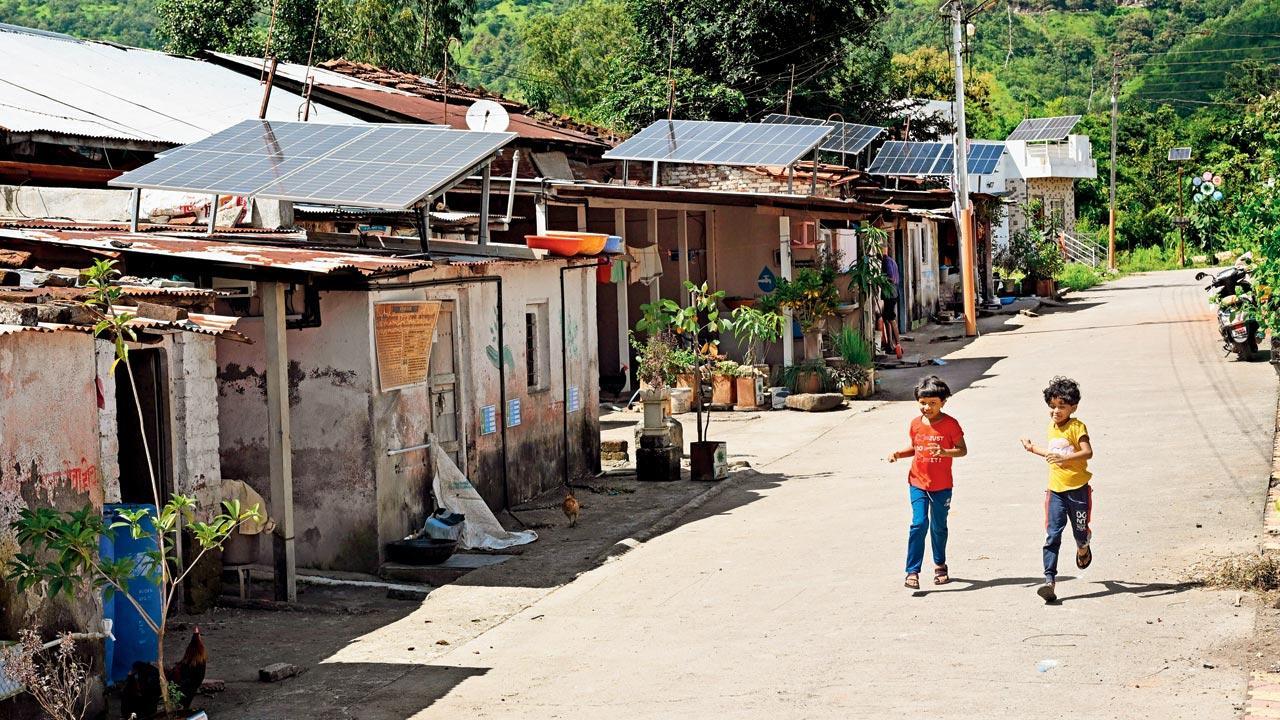
Children play on the streets of Manyachiwadi village in Satara district. Solar panels can be seen on the rooftops of the houses in the background
Amey Mane, a 10-year-old Class 5 student from Satara’s Manyachidawadi village, says he no longer sees power outages like he did until a year ago, and credits it to the 100 per cent solar-powered hamlet he calls home. He says, “Now, I can do my homework whenever I want. Earlier, we had two solar-powered LED lights in many houses. But today, with full-scale solar panels on every roof, we have the comfort of electricity around-the-clock.”
ADVERTISEMENT
The urban-to-rural landscape changes quickly in India. However, as one enters Manyachiwadi through Karad town in Satara district, the noticeable sights aren’t the usual rural challenges such as poverty and poor infrastructure as seen in rest of India, but the lush greenery of the Sahyadri range of the Western Ghats, and the lower population density.
The hamlet, which gets its name from its 95 per cent locals that boast the surname “Mane”, became Maharashtra’s first village to be powered entirely by solar energy around a month ago, and now has a negative net bill. This means the surplus electricity generated through the residential photovoltaic systems on every roof is transferred to the Maharashtra State Electricity Distribution Co. Ltd. Even hard copies of electricity bills are not sent to the village—an attempt to go cent per cent green.
 A total of 102 solar panels have been installed in the village, making it Maharashtra’s first fully solar-powered village
A total of 102 solar panels have been installed in the village, making it Maharashtra’s first fully solar-powered village
Apart from the households, the village’s 102 rooftop solar installations provide electricity for the local school, gram panchayat office, street lamps, CCTV cameras, and the village’s public water supply system.
Many notions of rural life are shattered in this tiny village of 420 citizens, around 80 km from Satara city. With cash crops like sugarcane, soybean, groundnut, wheat, and rice grown throughout the year, its own water supply system, CCTV network, and reinforced concrete cement (RCC) roads, Manyachiwadi appears to be a prosperous village, and the solar power supply is just another feather in its cap. This small village boasts facilities that are scarce in many Indian metro cities, like the RCC roads and well-lit streets.
However, things were not always this way. Currently, nearby villages in the district are still underdeveloped, with no signs of solar panels, dealing with issues that are common in any Indian rural community.
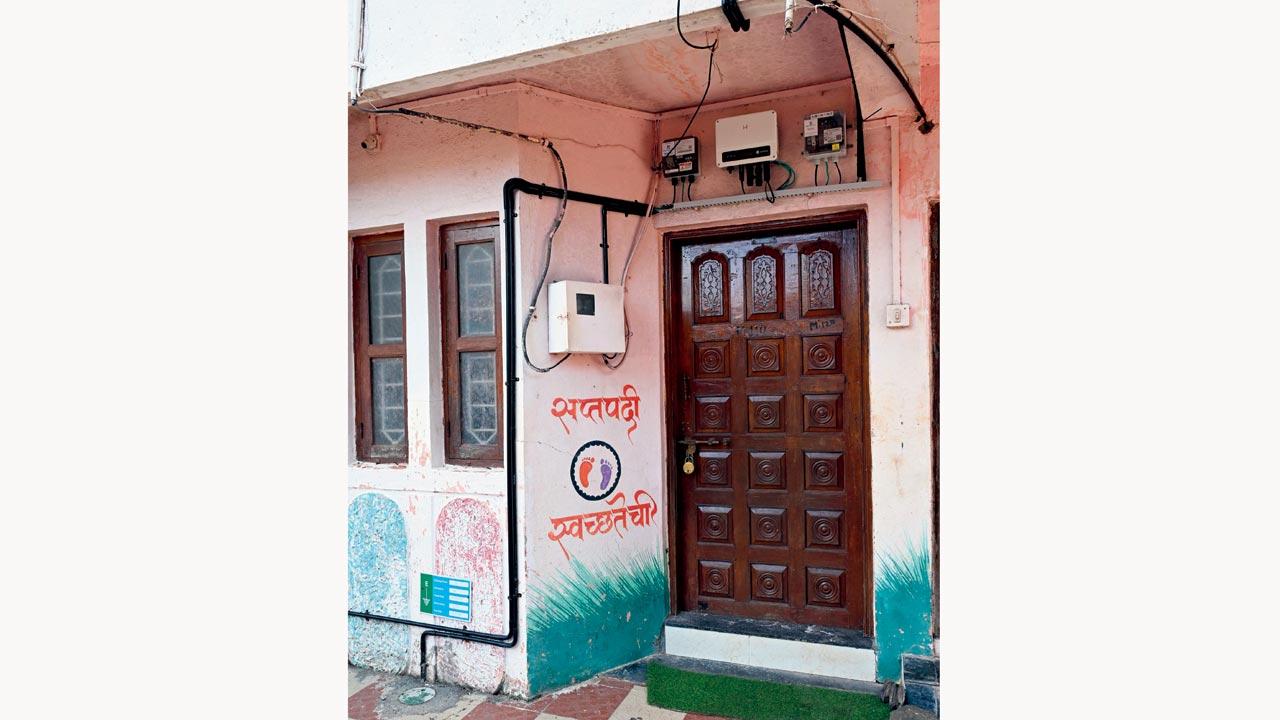 The electrical setup seen in the photo is used to store the solar energy from the photovoltaic systems, and for earthing
The electrical setup seen in the photo is used to store the solar energy from the photovoltaic systems, and for earthing
So, what made a difference for this hamlet? The answer lies in the proactiveness of its Women’s Self-Help Groups (SHGs). The 231 women in this community, who make up the majority of the village, are either farmers or homemakers and struggled to do their chores post-sunset as power outages were quite unpredictable until last year. Men, on the other hand, are mainly farmers.
Rekha Gunjalkar, a homemaker, explains, “Our work was halted due to darkness. Even the kids were unable to complete their homework because power cuts could last up to six-eight hours per day. It is quite tough to work with dhibri lamps (kerosene lamps) and candles. So, in the gram sabha, which convenes every week, we agreed to start an initiative to use solar power to light every house with two LED lamps. The government was also increasing electricity rates, so a reason for choosing solar power was that once you invest in it, there is hardly any maintenance for 25 years. We just need to wipe the solar panels during the summers as there is dust deposit.”
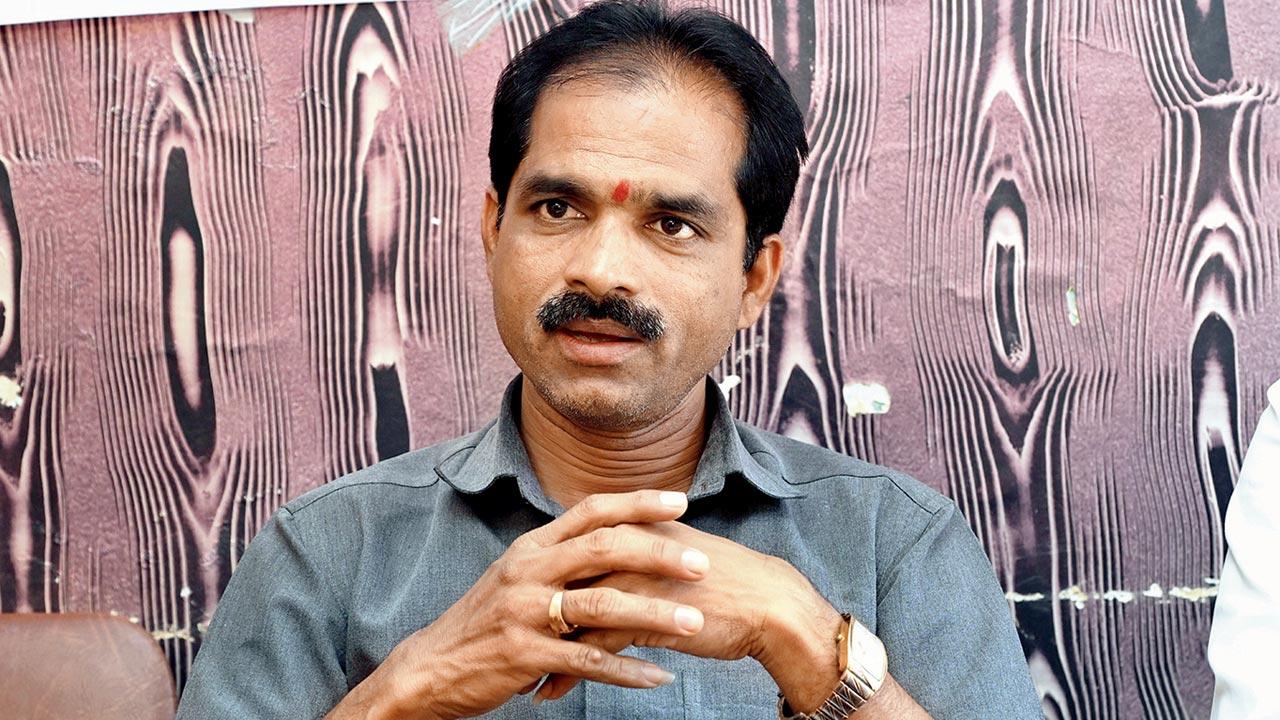 Ravindra Mane, Sarpanch
Ravindra Mane, Sarpanch
Padmavati Asalkar, a homemaker, says, “Women are still the backbone of any household. We get all the support from the men in our families, but when it comes to daily household responsibilities, it’s the women who bear the brunt of managing without proper electricity. Cooking, cleaning, looking after the children—it all becomes much harder in the dark. So, when the power cuts became too unpredictable, we knew we could not wait for someone else to solve our problem. As a group, we decided to take matters into our own hands. We may not have technical knowledge, but we understand our needs better than anyone. That is how we came up with the idea of solar-powered LED lamps for our village. This initiative, which started in 2010, has transformed our community. By 2019, every house had two LED lamps powered by a small solar panel.”
Reflecting on the past month they have spent with 24X7 electricity supply, Vijaya, a homemaker, says, “The village now feels more connected to the world with access to TV and radio 24X7, and our mobile phones are always charged. Earlier, our daily routine was set around power cuts. Today, there is peace of mind. Before, we were constantly stressed about when the electricity would go out, and we had to rush through chores. These solar panels changed our lives completely. We even get leisure time today for ourselves.”
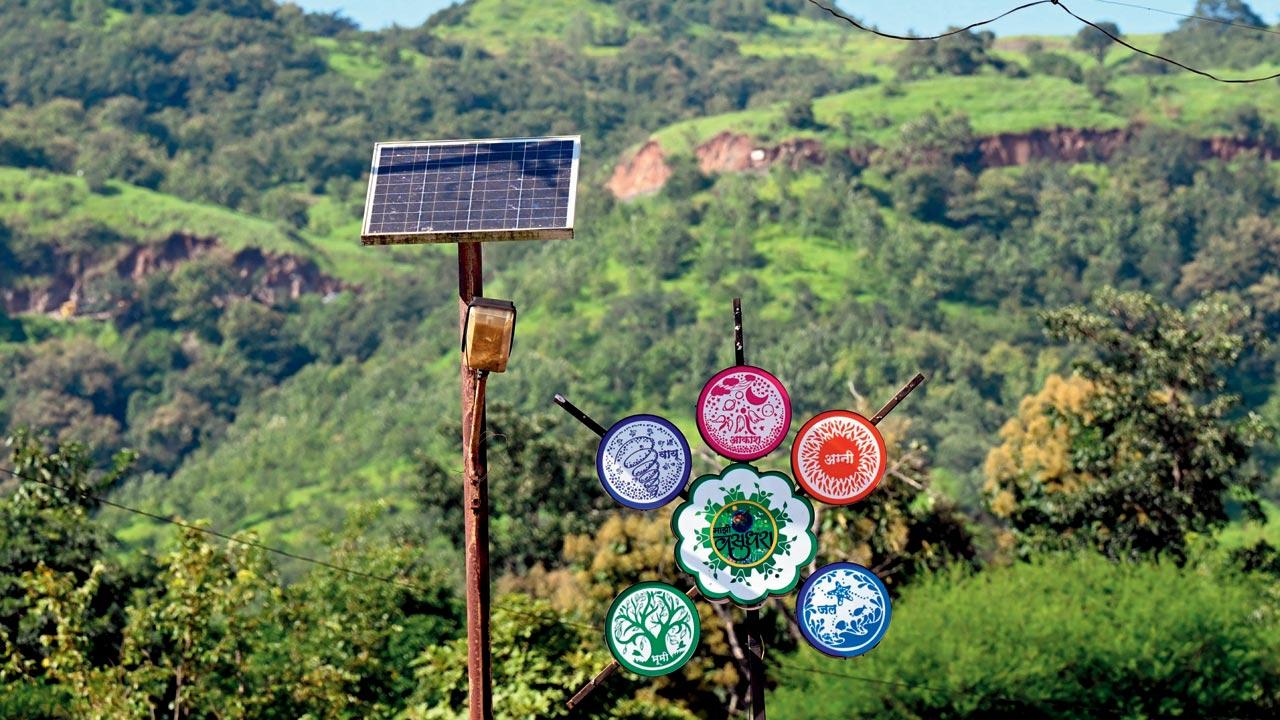 A solar-powered street lamp in Manyachiwadi. Pics/Satej Shinde
A solar-powered street lamp in Manyachiwadi. Pics/Satej Shinde
Bajirao Mane, a local resident, told mid-day that households in Manyachiwadi use more electrical appliances than typical villages in India, including refrigerators, TVs, and coolers, alongside essentials like fans and LED lights. “We don’t have air conditioners yet, but I’m sure we’ll see them around soon. Being situated amid the hills, one of the most important appliances still missing here is the electric geyser. Some homes have solar geysers, but they are quite expensive. I believe that in the near future, more families will opt for electric geysers, allowing us to phase out the traditional woodfire method for heating water, as we aim to become a fully green village.”
What began as an initiative by the Women’s SHGs gained further momentum as the men of the village joined in to support the cause. Sarjerao Mane, a member of the gram panchayat, told mid-day, “The men in this village have always stood by the women. Our village functions like a family. Once we secured some electricity in the early and mid-2010s, we began discussing how we could improve other aspects of our community, like having a proper road to the village, having a continuous power supply, etc. Today, we have achieved almost everything we need for a quality life. At 75, I have witnessed this village transform over the last two decades. Now, we have reached a point where we ask ourselves: is there anything else we are still missing? The villagers also took the initiative to get installed a cellphone tower in the village, ensuring 24X7 4G connectivity here.”
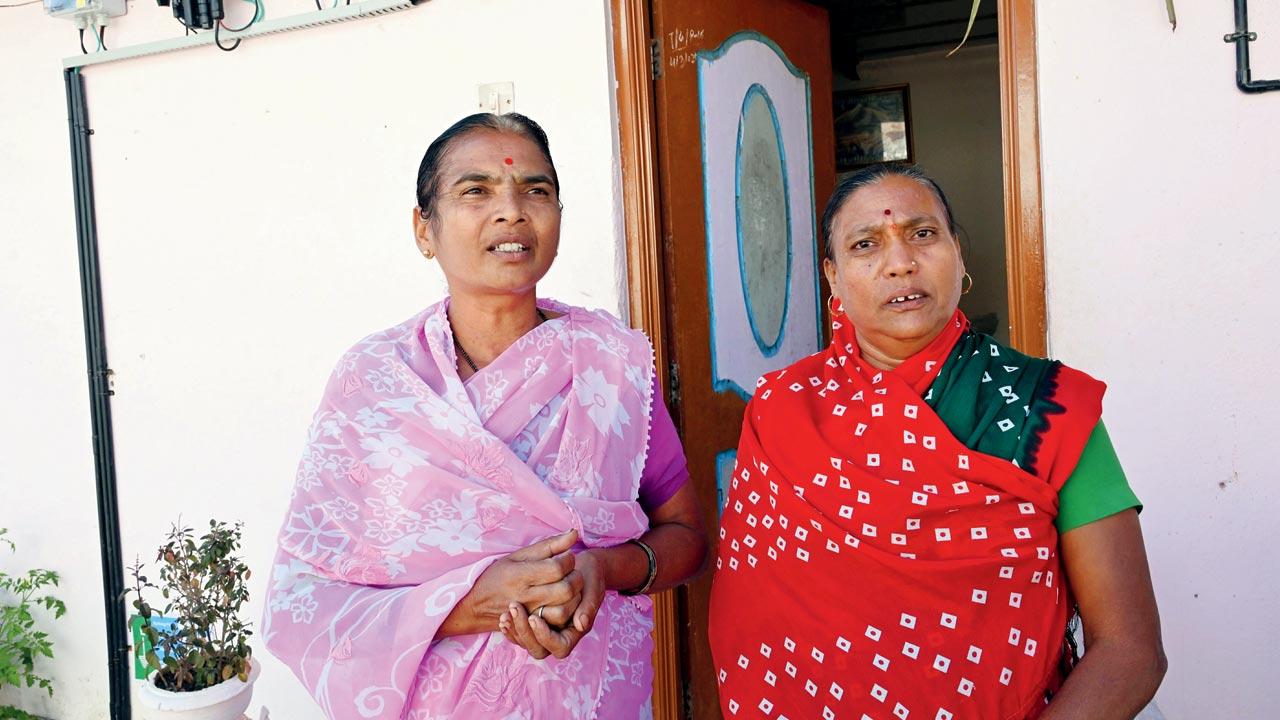 Padmavti Asalkar (L) and Rekha Gunjalkar
Padmavti Asalkar (L) and Rekha Gunjalkar
The residents explained the transformation that is possible when a community rises above politics and comes together for the welfare of the society. They have managed to achieve, on a micro-level, what many communities only aspire to. Sarpanch Ravindra Mane explains, “There are no elections for the gram sabha here. We all come together and choose the most proactive person with a proven track record of working for the community as the head. And we have had many people like that. And we make sure that we meet every week. We have not held an election for Sarpanch in over 30 years. One reason Manyachiwadi has become a model village is that today our priority is that we should become a sustainable village, and utilise every government scheme that is implemented, regardless of which party is in power.”
Gram sabha panel member Sarjerao Mane adds, “Our neighbouring villages have not developed as much because they are still caught up in petty politics. We, on the other hand, focus solely on the welfare of society. The results are visible all around.”
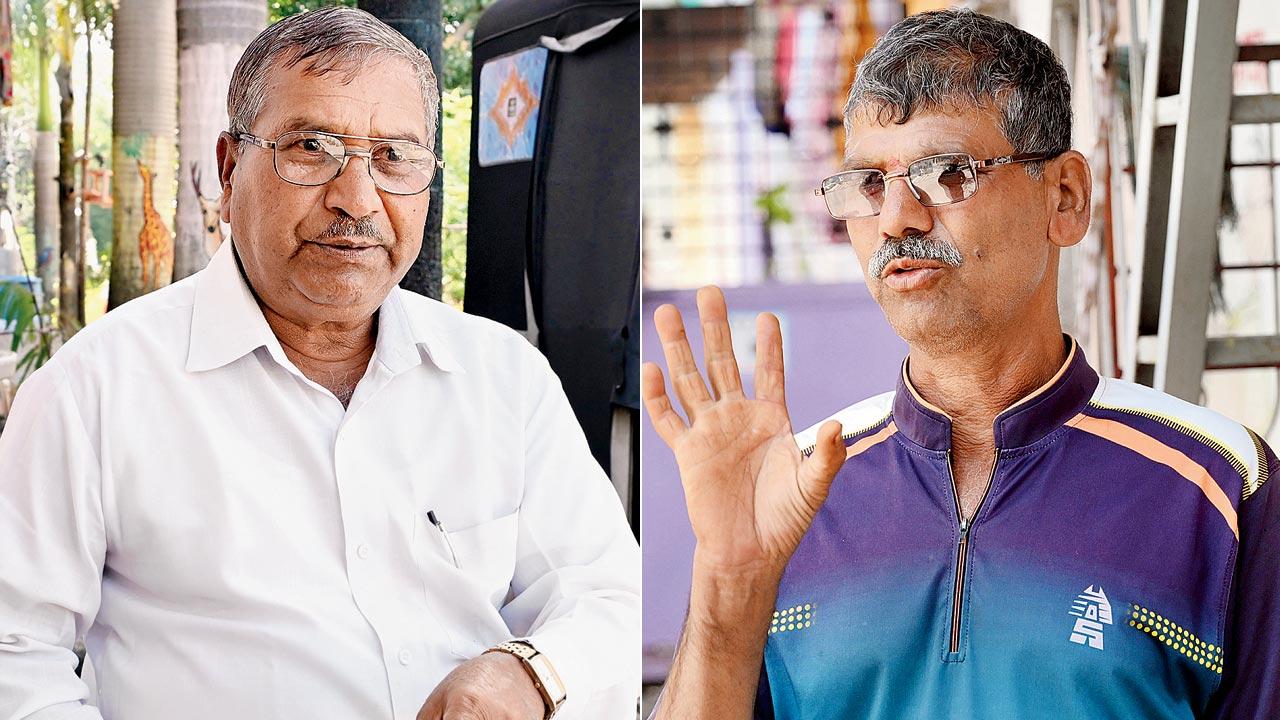 Sarjerao Mane and Suresh Mane
Sarjerao Mane and Suresh Mane
Proudly pointing at the covered gutters that open in the fields where wastewater is used to irrigate orchards, Sarjerao Mane says, “We have better drainage systems than any town or city. This shift began in 2001. Since then, Maharashtra has seen eight governments, and we have made the most of every scheme introduced for the villages.”
He adds, “The effective implementation of schemes has the power to transform entire communities. We have fully utilised programs like the JalJeevan Mission, Smart Gram Yojana, Pradhan Mantri Surya Ghar Muft Bijli Yojana, Majhi Vasundhara Abhiyan, etc. If you look at similar villages in the Desh region of Maharashtra, which is relatively prosperous, despite the favourable climate and rich soil, implementation of schemes often falls short. For solar panels, we secured a R1 crore subsidy from the state government in two phases (R50 lakh each). We made sure to use every penny for our village. Our community has always been aware and proactive, and we always had clear communication. With the help of our guardian minister, Shambhuraj Desai, the MLA from the Patan Assembly constituency, we received state funds to install 16 streetlight poles. However, after installation, we noticed one household and its adjoining street were left out. The village quickly came together and wrote to the minister again, requesting three additional poles. This strong sense of community has been ingrained in us since we began working together in 2001.”
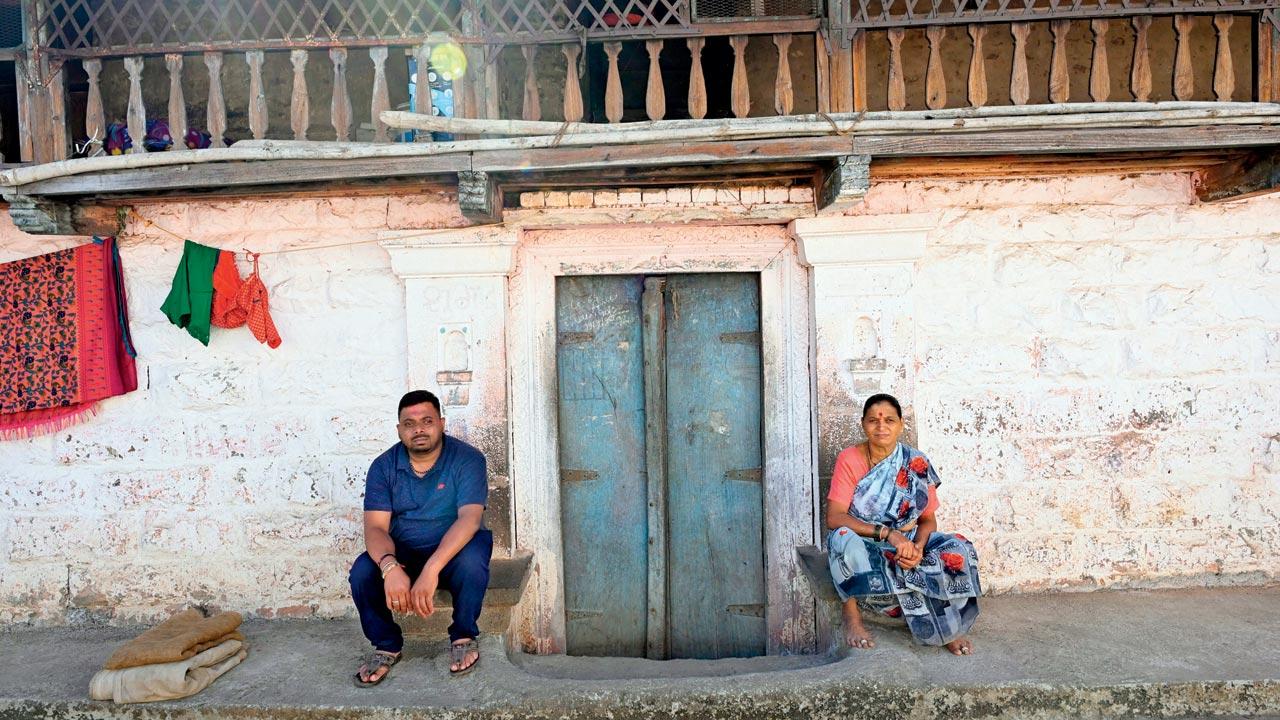 Asalkar Wada, the oldest house in the village, built in 1947, is also powered by solar panels. The fourth generation of the family can be seen sitting at the house’s threshold
Asalkar Wada, the oldest house in the village, built in 1947, is also powered by solar panels. The fourth generation of the family can be seen sitting at the house’s threshold
Shiv Sena MLA Shambhuraj Desai (also the guardian minister of Thane district) could not be reached for a comment on the implementation of schemes at the grassroots level in Maharashtra.
Another example of the village’s strong sense of community was seen during the road widening and modern drainage construction projects. Residents shared stories of how people voluntarily gave up portions of their land to make way for these developments—a stark contrast to the conflicts often seen in cities, where even a few centimetres of land leads to disputes.
Sarjerao Mane, and other members of the gram sabha, remark that while governments often seek credit for their village’s development, it is truly the community that has driven the progress. “We are in the news because the real work has been done by the people of this village,” Sarjerao Mane says. “If this sense of community is nurtured among the people across India, initiatives like solar panel installations and the Jal Jeevan Mission can be implemented in just a few weeks. It’s the community’s collective effort that makes these schemes succeed, not just government intervention,” he adds.
Ravindra Mane, the Sarpanch, shares, “We have 4G connectivity, and almost every household has a smartphone. However, we are yet to tap into social media to bring tourists to our village. With the solar panels providing round-the-clock electricity and nearly every amenity in place, like wide roads and CCTVs, we are planning to launch agritourism soon. Out of the 420 residents, only 272 currently live here, as some of our youth have migrated to cities for studies and jobs. We intend to collaborate with the young people who have stayed back to promote Manyachiwadi on social media.”
231
Women in this community, who make up the majority of the village, and are the ones who spearheaded the project
 Subscribe today by clicking the link and stay updated with the latest news!" Click here!
Subscribe today by clicking the link and stay updated with the latest news!" Click here!







